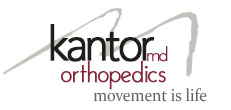Signs You Need A Knee Replacement
Signs You May Need A Knee Replacement
by Jerry Seaman
Summary – What are the signs you may need knee replacement surgery? There are simple signs that mean you MAY need a knee replaced. One indication is if the pain in the knee keeps you awake at night or causes you to wake up when you roll over. The knee arthritis may limit your activities, particularly if walking half a mile can be too painful to bear. Just stiffness in the knees or the occasional sharp pain does not mean you need full or partial knee joint replacement. If the pain persists, even after other forms of treatment, or for more than a couple of days, then you speak to your doctor.
If you have knee arthritis, surgery might be a viable option. Arthritis is actually an inflamed joint. People think of arthritis as an abnormal growth of cartilage or when the cartilage has worn away, causing inflammation around the joint. There are many types of arthritis, but the most common is osteoarthritis. This results in the cartilage wearing away until the bare bone is exposed. This type of arthritis in the knee can definitely benefit from knee replacement.
Knee replacement surgery has a long recovery process and the physiotherapy can be extremely painful at times. Although, if the quality of life has deteriorated due to a lack of mobility, knee arthritis or knee pain, it may be time to consider surgery. The National Institutes of Health reported knee replacement improves the quality of life and mobility in over 90% of the patients. Knee joint replacement is the most performed joint replacement surgery done MedzCanada today. Many people continue to suffer knee arthritis because it is difficult to know if surgery is needed.
The conditions that can be treated with full or partial knee replacement surgery are: severe osteoarthritis, Ligament damage, osteoarthritis and rheumatoid arthritis, hemophilia, crystal deposition diseases, avascular necrosis and bone dysplasias. Some of these can be resolved with partial knee replacement, which is much less invasive and provides for a faster recovery. In the case of arthritis, crystal deposition, avascular necrosis and bone dysplasias, partial replacement would only be a stopgap measure. If you have any of the above-mentioned signs it may be time to speak to your doctor.
—–
Jerry Seaman is a two-time knee replacement patient and former state wrestling champion. He knows about knee replacements and the challenges you face. At age 65, just 8 weeks after his second knee replacement surgery Jerry is able to squat 205lbs for 20 reps, stand and balance on a basketball, hang upside down on a bar 12 feet off the ground, and has a full 135 degrees of flexion in his knee.
Article Source: http://EzineArticles.com/?expert=Jerry_Seaman
Viscosupplementation: Therapeutic Mechanisms And Clinical Potential In Osteoarthritis Of The Knee
Viscosupplementation by means of intra-articular injections of hyaluronic acid has been used to treat osteoarthritis of the knee. The proposed mechanisms of action result from the physical properties of hyaluronic acid, as well as from its anti-inflammatory, anabolic, local analgesic, and chrondroprotective effects. Adverse reactions from hyaluronic acid injections into the knee occurred in 8.3% of the 336 patients treated in one study, but at a rate of less than 3% per injection. Reactions were almost always local and generally resolved over 1 to 2 days. Hyaluronic acid injections were approved by the US Food and Drug Administration as a medical device; thus, the level of efficacy demonstrated is less than might have been required for approval as a drug. Several studies have failed to show statistically significant benefit compared with placebo. Furthermore, the treatment is relatively expensive; the cost of the drug for a series of injections is more than $500 per knee. Therefore, widespread use of these agents should be limited until more convincing data on their efficacy are available from well-designed clinical trials.
Application Of Biologics In The Treatment Of The Rotator Cuff, Meniscus, Cartilage, And Osteoarthritis
Advances in our knowledge of cell signaling and biology have led to the development of products that may guide the healing/ regenerative process. Therapies are emerging that involve growth factors, blood-derived products, marrow-derived products, and stem cells. Animal studies suggest that genetic modification of stem cells will be necessary; studies of cartilage and meniscus regeneration indicate that immature cells are effective and that scaffolds are not always necessary. Current preclinical animal and clinical human data and regulatory requirements are important to understand in light of public interest in these products.
Efficacy And Treatment Response Of Intra-Articular Corticosteroid Injections In Patients With Symptomatic Knee Osteoarthritis
Introduction: Intra-articular corticosteroid injections are often used for short-term pain relief inpatients with knee osteoarthritis (OA). This study investigates the efficacy of intra-articular corticosteroid injections in patients with symptomatic knee OA and factors that affect treatment response. Methods: This prospective, multicentered cohort study had 100 participants with radiographic evidence of knee OA enrolled. Participants received one corticosteroid injection into the affected knee and were evaluated before the injection (baseline) and at 3 weeks, 6 weeks, 3 months, and 6 months after the injection.
Platelet-Rich Plasma In Orthopaedic Applications: Evidence-Based Recommendations For Treatment
Autologous platelet-rich plasma (PRP) therapies have seen a dramatic increase in breadth and frequency of use for orthopaedic conditions in the past 5 years. Rich in many growth factors that have important implications in healing, PRP can potentially regenerate tissue via multiple mechanisms. Proposed clinical and surgical applications include spinal fusion, chondropathy, knee osteoarthritis, tendinopathy, acute and chronic soft-tissue injuries, enhancement of healing after ligament reconstruction, and muscle strains. However, for many conditions, there is limited reliable clinical evidence to guide the use of PRP. Furthermore, classification systems and identification of differences among products are needed to understand the implications of variability.
